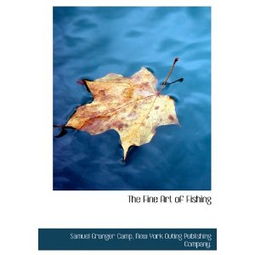
Content:
Introduction: Trolling fishing is a popular and effective method for catching a variety of fish species in both freshwater and saltwater environments. Whether you're a seasoned angler or a beginner looking to expand your fishing skills, understanding how to operate a spinning rod and master the art of using baited hooks is crucial. In this article, we provide you with a comprehensive video guide on how to operate a spinning rod for trolling, along with essential tips and techniques to help you become a proficient angler.
Section 1: Choosing the Right Equipment Before diving into the fishing techniques, it's important to have the right equipment. Here's a quick rundown of the essential gear you'll need for successful trolling:
- Spinning Rod: A lightweight spinning rod with a medium to fast action is ideal for trolling. The length of the rod should be between 6 to 7 feet.
- Spinning Reel: A high-quality spinning reel with a smooth drag system is essential. Ensure the reel is compatible with your rod and has enough line capacity for the type of fishing you plan to do.
- Monofilament Line: Choose a monofilament line with a thickness that matches the size of your bait and the fish you're targeting. Common line thicknesses range from 6 to 14 pounds.
- Baited Hooks: Select the appropriate size and type of hooks based on the fish species you're targeting. For example, use larger hooks for larger fish and smaller hooks for smaller fish.
- Lures and Baits: Depending on the fish you're after, you may use artificial lures, live bait, or a combination of both.
Section 2: How to Operate a Spinning Rod for Trolling Now that you have the right equipment, let's learn how to operate a spinning rod for trolling:
- Attach the reel to the rod: Make sure the reel is securely attached to the rod with the reel seat. Adjust the drag to a setting that allows the line to run freely but can handle the fish's fight.
- Thread the line through the guides: Run the line through the rod's guides, starting from the tip and working your way down to the reel. Keep the line tight and avoid any twists or kinks.
- Tie the knot: Tie a reliable knot, such as the Palomar or the Improved Clinch Knot, to attach the monofilament line to the hook.
- Attach the lure or bait: Thread the lure or bait onto the hook, ensuring it's securely attached.
- Cast the line: Hold the rod with a firm grip and cast the line out into the water. Aim for a smooth, controlled cast to avoid line twists and tangles.
- Control the speed: Adjust the speed of your retrieve based on the fish species and conditions. A slower retrieve can attract more fish, while a faster retrieve may be necessary to cover more water.
- Reel in: As the lure or bait moves through the water, reel in the line at a consistent pace. Pay attention to any sudden movements or resistance, as these could indicate a fish has taken the bait.
Section 3: Trolling Techniques and Tips To improve your chances of catching fish while trolling, here are some essential techniques and tips:
- Fish the appropriate depth: Research the preferred depths of the fish species you're targeting and adjust your trolling speed and depth accordingly.
- Use a variety of lures: Experiment with different types of lures and baits to see which ones work best in your fishing environment.
- Keep an eye on your line: Pay close attention to your line for any signs of a fish striking, such as sudden movements or tugs.
- Adjust your technique: If you're not having success, try changing your lure color, size, or retrieve speed to attract more fish.
- Stay patient: Trolling can sometimes be a slow process, so stay patient and keep experimenting with different techniques until you find what works.
Conclusion: Trolling fishing can be a rewarding and exciting way to catch a variety of fish species. By following this comprehensive video guide on how to operate a spinning rod for trolling, along with the essential tips and techniques provided, you'll be well on your way to mastering the art of baited hook fishing. Remember to always practice safe fishing habits and respect the environment and the fish you're targeting. Happy fishing!












